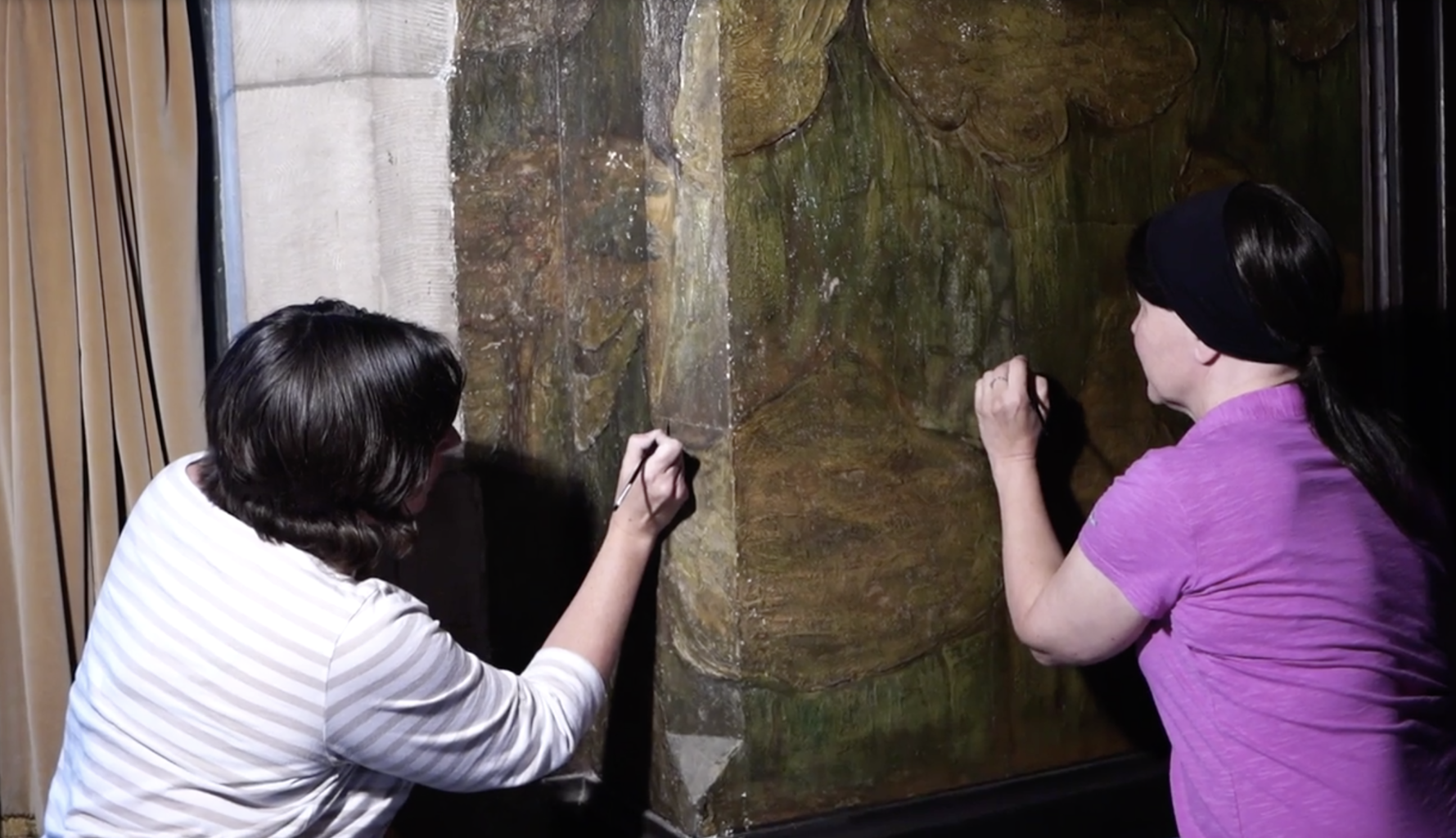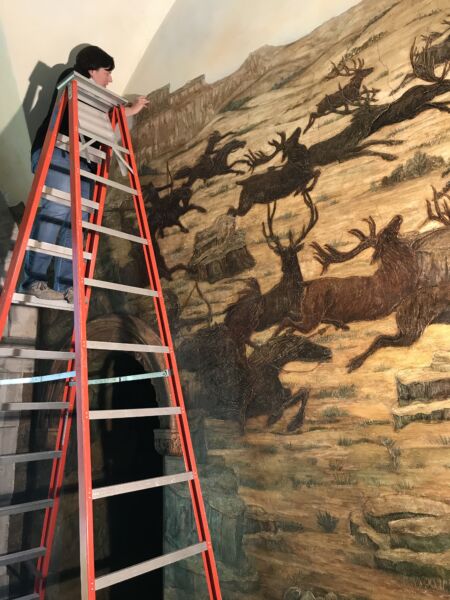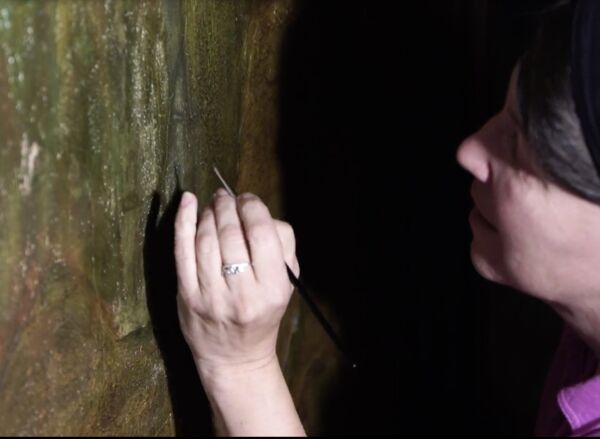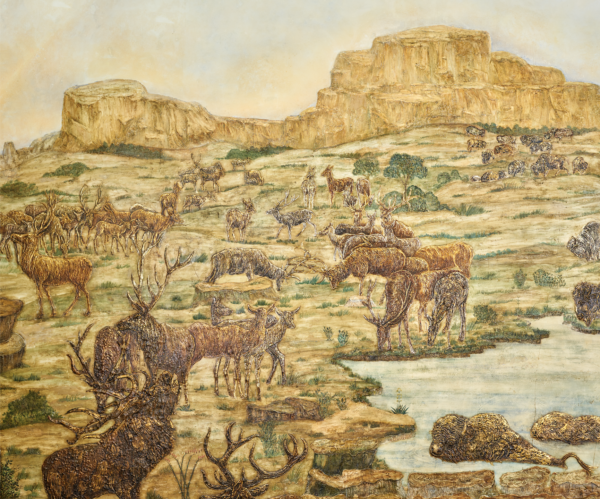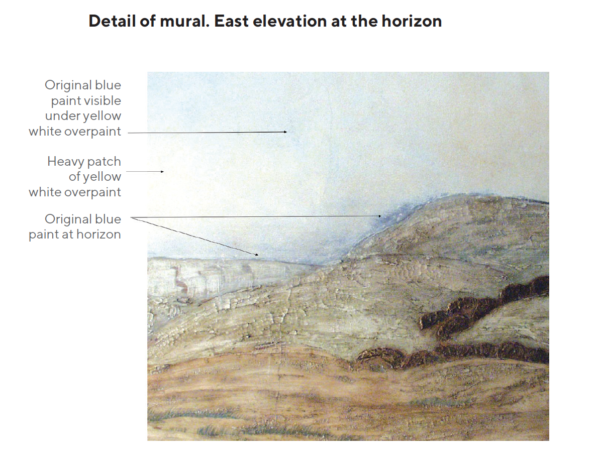It has been inspiring to see organizations around the country sharing their stories throughout the month of May in recognition of Preservation Month. At Planting Fields Foundation, the preservation of landscape, art, architecture and history of this site are central to our mission. In the spirit of the site’s creators, even as we keep an eye on the past, we are always looking toward the future.
We connected with Erin Moroney, Architectural Conservator, and Mary Betlejeski, Painting Conservator, from the New York State Bureau of Historic Site & Park Services who have been helping to preserve the Robert Winthrop Chanler Buffalo Mural in Coe Hall since 2010. Chanler’s unconventional techniques and material choices have challenged this team, just as they did the Coes who also endeavored to maintain it in the years following the mural’s completion. The in-painting process used to restore and protect the mural is labor intensive and requires meticulous precision. Their visit to the Buffalo Mural last September revealed that much of the area above the horizon in the mural has been overpainted and that Chanler’s original blue sky survives beneath it. Samples show evidence of ultramarine pigments. Our hope is to one day reveal Chanler’s original palette.
Below is a complete transcript of our conversation with them.
PFF: How many years have the 2 of you been working on the Buffalo Mural at Coe Hall?
Mary and Erin: We have been working on the mural project since 2010. The project began with an extensive testing phase to determine the best treatment methods. We actually began treating the mural itself in 2012.
PFF: For the lay person, what is “gesso” exactly, particularly as it was used by Chanler a century ago? You referenced this in your piece for the exhibition booklet for The Electrifying Art and Spaces of Robert Winthrop Chanler noting:
“Chanler added depth and movement to his scenes by building up relief and texture with layers of gesso. This gesso layer, while critical to the mural’s appearance is also the source of its inherent vice.”
Mary and Erin: Gesso is a preparatory layer that is applied as a base for the paint layer. Chanler also used this layer to create his 3D sculptural relief. It is generally composed of chalk, gypsum and glue. In Chanler’s time the glue most likely was an animal hide glue.
PFF: Does the ultramarine sample shown in the image attached suggest that the original sky may have hues of blue that are that deep and vibrant? Were you surprised to see that color?
Mary and Erin: No, the blue sky would not have the intensity of the ultramarine pigment. The ultramarine would have been lightened with fillers and other pigments. It was interesting to find that Chanler used this pigment versus using other blues like Prussian blue.
PFF: Is there anything personal or special you could share with us about your experience working on the Buffalo Mural? Maybe a few words about the progress you have seen in the conservation process or anything you’ve learned and would like to share?
Mary and Erin: We were astonished by how the mural came to shimmering life when flooded with light. The effect Chanler was going for was apparent. We also appreciated Chanler’s whimsical humor at the idea of eating your meal under the circling buzzards.
Planting Fields Foundation

